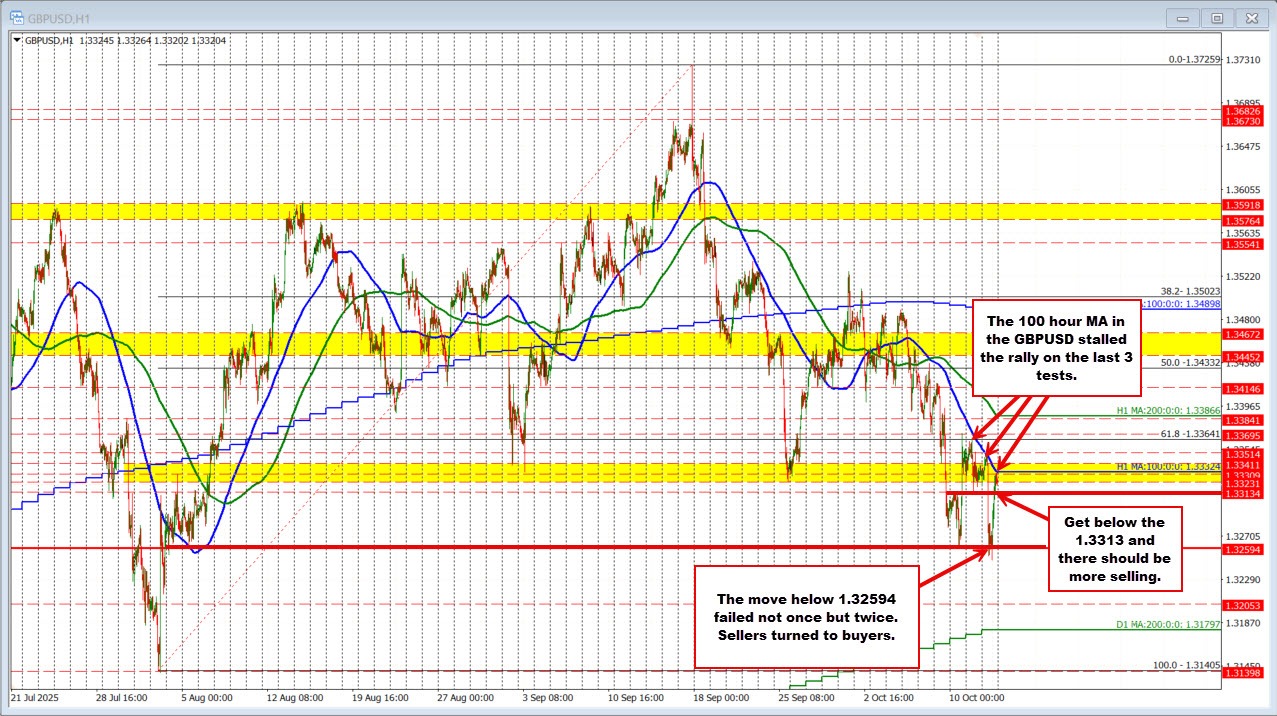
The GBPUSD traded higher in the Asian session, testing its 100-hour moving average, but once again found willing sellers leaning against that level. The same dynamic played out yesterday, when the pair also stalled near the 100-hour MA before turning lower.
This time, the selling pressure intensified following weaker-than-expected UK employment data, which pushed the pair below a key swing level at 1.32594 — a level that had marked both Friday’s low and the lowest point since August 5th. The price briefly extended lower twice during the session, reaching a day low of 1.3249, but downside momentum quickly faded as USD selling emerged during the U.S. session, forcing shorts to cover.
That reversal gathered momentum, lifting the pair back toward its 100-hour moving average, now positioned lower at 1.3332. Yet, just as before, sellers have stepped in once again, keeping the pair capped for now.
As we move toward the close and into the new trading day, the 100-hour moving average remains the key short-term barometer for both buyers and sellers.
A break above that level, followed by a move beyond the top of the swing area at 1.3341, would likely invite further upside momentum, with 1.3364 (broken 61.8% retracement) and the 200-hour moving average at 1.3386 (and falling) as next upside targets.
Conversely, if the pair slips back below Monday’s low at 1.3313, it would reopen the door for selling, with the recent lows from this week and last once again in focus.



